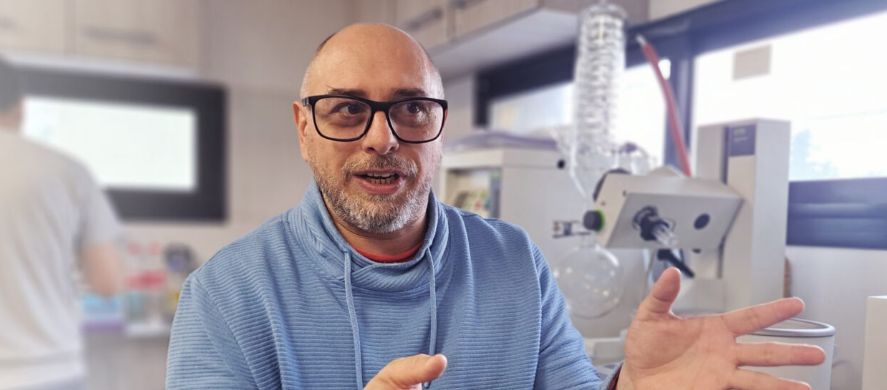Patricio Manuel Chinestrad is an Argentine researcher who earned his degree in Biotechnology from the National University of Quilmes (UNQ) in Buenos Aires, Argentina.
Currently, Chinestrad is pursuing a Ph.D. at the Molecular Pharmacology Laboratory of the same university, where he combines his background in biology with cutting-edge research conducted in the lab.
His expertise in biochemistry, molecular biology, and medical sciences allows him to apply both in vitro and in silico techniques in the field of drug design.
Chinestrad and Science
Chinestrad is part of the Molecular Pharmacology Laboratory at UNQ, where he focuses on developing drugs to fight diseases—particularly various types of cancer.
He is also affiliated with CONICET (National Scientific and Technical Research Council), the Argentine government agency dedicated to promoting science and technology.
He divides his research efforts between computational modeling and lab experimentation. Through computational studies of disease-causing proteins, Chinestrad identifies molecules that could potentially be transformed into effective medications.
From data analysis to laboratory testing, Chinestrad carries out drug trials that, if successful, could lead to the development of new treatments.
Drug Design
Although much of his work focuses on cancer, Chinestrad also researches treatments for immune disorders and Alzheimer’s disease. His goal is to design new drugs and uncover innovative methods for developing treatments.
Among his notable projects are the development of an inhibitor for glioblastoma—a tumor that affects the brain or spinal cord—and an anti-tumor agent aimed at boosting immune system responses.
His research involves analyzing cancer-related molecules and the proteins linked to these diseases. Using computers, he identifies molecules that can effectively target these proteins and then works to synthesize and test them in the lab.
The Role of Technology in Drug Design
Technology has become a crucial tool in the fields of medical science and pharmacy. Among the key advantages of using technology are access to extensive databases, increased productivity, and more streamlined management processes.
Computer-aided drug design is part of this growing synergy between medical science and technology. The development of new medications is increasingly reliant on computational methods, which also benefit other scientific areas like chemistry.
This approach demands interdisciplinary work, including computational modeling, experimental trials, and data processing. While drug discovery is traditionally a complex and expensive process, computational methods make it more efficient and data-driven.
When it comes to cancer research, technology plays a variety of roles. Technological innovation enables important breakthroughs in the fight against cancer.
Some of the technologies currently used include robotic surgery, artificial intelligence, and telemedicine.
Robotic surgery enables quicker recovery and a faster return to daily life by using robotic arms to perform precise, minimally invasive procedures.
Artificial intelligence helps test potential treatments and identify patterns in large data sets before therapies are proposed.
Telemedicine allows for remote patient monitoring, enabling continuous healthcare access and facilitating clinical studies and treatments without requiring physical presence.
Technology brings with it a wide range of tools, methodologies, and analytical techniques that vary across the medical sciences.
In the context of drug design research, numerous studies now incorporate computational methodologies to analyze pharmaceuticals.
Especially in cancer-related research that demands high precision, Chinestrad is among the leading researchers dedicating his career to the development of advanced medical solutions.
Based in Argentina, he is one of the researchers balancing computational modeling and hands-on lab work to advance medical science.
The ongoing advancement of technology has proven to be essential and effective in the realm of medical research—and cancer treatment is one of the many areas that benefit significantly from these technological innovations.


